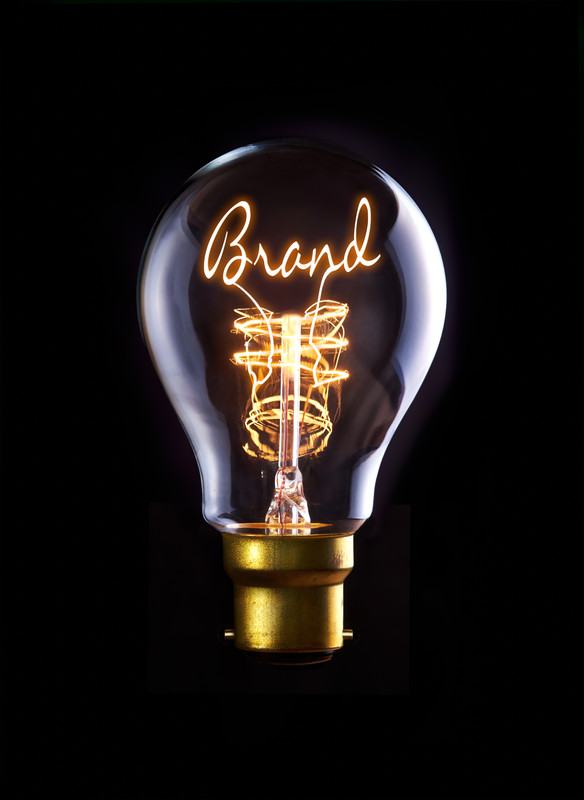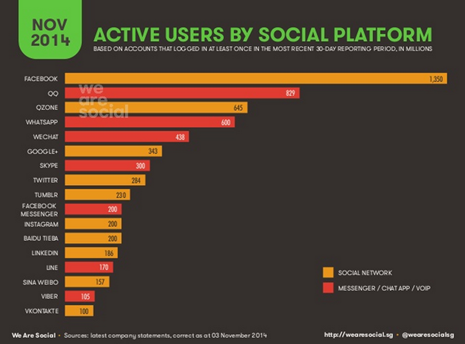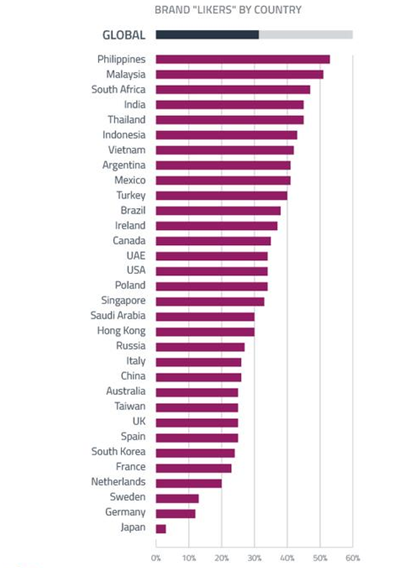
Successful business owners know that generating lucrative sales goes beyond having a product to sell. The success of your business also rely on how effective you are in creating greater visibility and awareness for your brand, products or services with targeted customers. Those with huge marketing budgets can go for the traditional route and spend a fortune advertising on radio, TV and print collaterals.
In a rapidly evolving digital age, businesses can get the same or even better visibility and exposure for their brands through digital marketing channels – foremost of which is social media – at the fraction of the cost traditional media requires. Creating greater awareness for your brand can be a bit challenging particularly for small and medium businesses, but emerging social media platforms can help level the playing field – giving your business potential access to more than 2.046 billion active social media accounts.

Many businesses and marketers that integrated social media into their digital marketing campaign already realized several advantages and benefits from their campaigns. 86% of these marketers acknowledged the importance of social media to their businesses, with 75% reported an increase in traffic while more than 64% generated an increase in leads spending just 6 hours each week on social media marketing.
With figures like these and the basic fact that millions of Internet users log into their favorite social network each day, small and medium business users simply could not afford to overlook the fact that social media can work wonders for their business and boost brand awareness – and the following guide can help achieve this.
1. Focus on the Right Social Media Channel

Each social network is different from another and caters to different targeted audiences based on their sex, social status, interests, and other demographics. Targeting a social network based on the number of active users in each platform, as outlined in the chart above, may not be the best option for you if your brand targets a particular type of customer. Generating brand awareness would also depend on the geographical location you are focusing your campaign on, like the chart below that outlines brand “likers” per country.
 It will also be to your disadvantage if you try to be on all social networks at once, draining you of valuable resources and time – that you should use to focus on the right social media channel that will work for your brand and business.
It will also be to your disadvantage if you try to be on all social networks at once, draining you of valuable resources and time – that you should use to focus on the right social media channel that will work for your brand and business.
2. Optimize Your Social Content Strategy
Once you’ve establish the social networks you will be focusing on, the next step is to optimize your social content strategy that will enable you to create interesting content that your targeted audiences in these social networks will be interested in. Interesting content topics that goes viral are liked, shared, and commented on by targeted audiences. These types of content can be funny, educational, controversial, and visual – practically anything under the sun.
So what makes an interesting content? The answer is to provide your targeted audiences the content they want.
Doing so involves getting to understand more about your targeted audiences and gain insights on the topics and themes that would appeal to their needs, interests, and preferences. Some types of audiences prefer long and fully descriptive academic articles that are filled with well-researched information about the products and services they are interested in. Others may prefer content with a more visual appeal, with thoughts clearly explained by graphics, pictures and videos. It depends on your audiences – so give them what they want.
3. Establish an Integrated Organizational Strategy
To make your social media brand awareness strategy work, key members of your organization should take part or be incorporated in your efforts. Creating brand awareness through social media should not be the sole responsibility of a single person but to all members of your team or organization. The importance of this fact is downplayed by many businesses, with only 27% maintaining a dedicated social media team and up to 78% have no plans of forming a team of their own.
Respected UK social media agency Our Social Times attempted to define the best management structure for social media activities and suggested these tried and tested organizational models for managing social media:
- Multiple Hub and Spoke – Big brands adopt this management structure where a centralized “hub” of trained experts assist individual departmental teams or “spokes” that focus on specific social media activities.
- Command Center – Some of the more established brands centralize their social media activities through a command center composed of trained personnel equipped with appropriate monitoring tools at their disposal.
- Holistic – This type of organization approach requires everyone in your organization to actively take part in social media marketing activities, particularly in communicating and assisting customers with what they need. This would however require organization-wide training and higher levels of commitment from all your staff.
According to Our Social Times, organizations just starting out on their brand awareness campaign using social media can start best with the Multiple Hub and Spoke approach, then work your way towards forming a Command Center as your customer service activities goes more mature. As more of your staff are trained and involved in your social media marketing efforts, then you can work your way towards forming a Holistic organization.
4. Strengthen Your Engagement Strategy
A key element to boosting brand awareness through social media is to establish a healthy engagement with targeted audiences. Through engagement, you can interact with targeted audiences about matters pertaining to your industry or business, to your products or services, or to directly respond to inquiries, concerns or complaints.
Aside from your content, timing is key to engagement and according to studies, you can reach the highest potential in engaging with customers during peak social media usage times between 1 to 3 pm, with engagement going 18% higher during Thursdays and Fridays. These types of information can help you plan your engagement strategy, including planning out key elements that you will measure and monitor from your campaigns, which include:
- Reach – which measures how many fans, followers, and impressions your brand and content generated from particular social network.
- Mentions – which measures the frequency from which your brand was discussed or mentioned in a social network at any given period of time. You can also measure your share of mentions as a comparative ratio against your competitors, or the number of mentions your brand generated from a particular discussion thread that is relevant to your brand.
- Inbound Links – which indicate from where people engaging with your brand are coming from, including the particular type of content you generated that will drive attention and citation link to your brand.
5. Boost Your Hashtag Strategy
Started from Twitter, hashtags have evolved as an effective tool for driving and attracting people interested in a particular theme or topic. These are great and powerful ways to boost your brand awareness, but you can also end up mis-using this tool if your hashtag strategy is not executed properly. You can make use of several hashtag strategies including creating and running your own branded hashtag promotions, conducting Twitter chats, and taking advantage of trending hashtags in your content – but just remember to keep them short, concise and memorable.
6. Roll Out Your Social Media Advertising Strategy
There are now more than 1.35 billion Facebook users active in this social network, which keeps on increasing by 14% every year – an indication of just how big Facebook has become. But that’s not all. More than 864 million access their accounts on a daily basis, not to mention the more than 1.12 billion monthly active users (MAU) logging onto their Facebook accounts through their mobile devices.
Despite the big potential of using social media for creating brand awareness, recent studies conducted in this regard, including one from Ragan.com and NASDAQ QMX Corporate Solutions, 27% is still not satisfied with the results they are getting from their social media efforts. There could be many factors that have influenced this, including the fact that many social media marketers still use likes and follower numbers as their gauge for success.
The activities they use for social media marketing may not be enough to boost brand awareness so it would be to your best advantage to expand your campaigns and include paid social media advertising to your marketing mix. You may argue that social media is free and you do not have to spend a time marketing your brand, but making use of paid advertising channels like Facebook Ads, LinkedIn Advertising, and Twitter’s Promoted Tweets can get your brand right in front of highly targeted audiences – all with the greatest potential of becoming paid customers.
Social media is a powerful and very effective tool for driving targeted traffic, engagement, conversions and even sales from the growing number of active users accessing their social network accounts through their laptops or mobile devices. What’s more important is how effective social media can be for boosting brand awareness and these guides can help you establish a robust social media strategy that will put your brand right on top of the social map.
